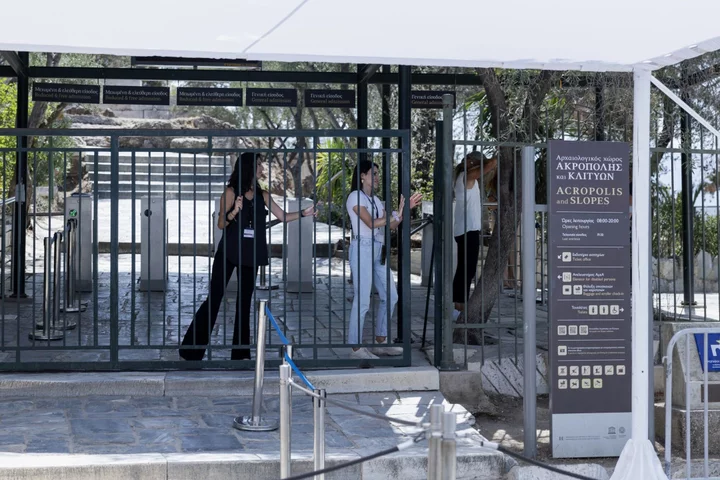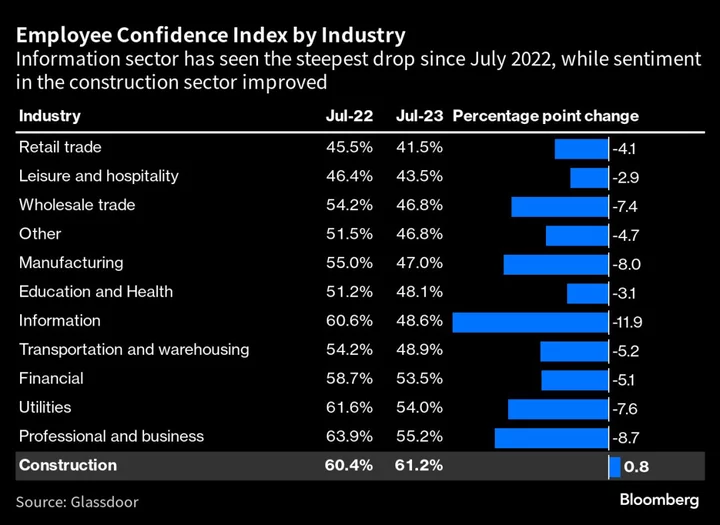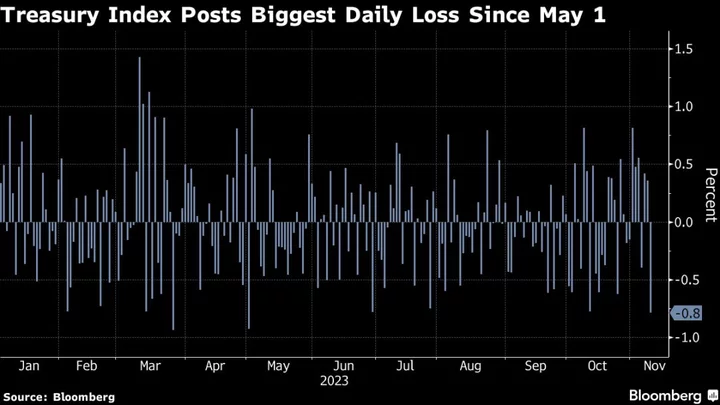Iran’s declaration of a two-day public holiday over life-threatening heat, as temperatures in parts of the country are forecast to touch 50C (122F), is an eerie echo of restrictions enacted to protect citizens from the Covid-19 pandemic. It’s a demonstration of the elevated public-health risks caused by climate change that will impose increasingly severe costs on human life and the global economy.The decision to close offices, banks and the stock exchange on Wednesday and Thursday is likely the first nationwide shutdown in response to extreme heat. The government told people to stay indoors during the day as temperatures climb, though some air-conditioned areas including shopping centers operated as usual. The measure may have been unprecedented, but there have already been dozens of localized curbs on daily life during the hottest June and July on record. “While it is unusual to require a national public holiday to protect people, it is sadly no longer unusual for heat waves to cause major disruption and increases in deaths among the vulnerable,” said Pete Baker, a policy fellow and assistant director of global health at the Center for Global Development.In recent months, schools in India, Mexico and the Philippines have sent children home or altered teaching hours. Greece shut down the Acropolis temporarily last month and imposed work restrictions between noon and 5pm as ravaging wildfires forced the evacuation of hundreds of tourists. The US city of Phoenix, which baked in 110F (43C) temperatures for a record 31 days, closed hiking trails.
More restrictions could be ahead as heat becomes more intense year by year. Italy, where residents experienced both 45C heat and tennis-ball sized hailstones last month, is considering whether it should bring back pandemic-era furloughs for farmworkers. A German official wants Spanish-style midday siestas for workers.More than 6.5 billion people — or 81% of the planet’s population — were exposed to climate change-attributed heat in July, according to a report published Wednesday by Climate Central.
By the end of this decade the accumulated financial loss due to heat stress worldwide is expected to reach $2.4 trillion, according to a study by the International Labour Organization. The report projected a more than 2% decrease in the number of working hours every year.Read More: This Year Is Already on Track to Be the Hottest Ever RecordedWith the Earth 1.2C warmer than before the Industrial Revolution, 22 of the last 23 years have broken heat records and climate models show even more extreme temperatures ahead as greenhouse gas emissions continue to rise. That means more lost lives and livelihoods unless countries move rapidly to stop burning fossil fuels and bolster public health infrastructure to tackle extreme heat.
Part of the reason why heat has been so intense this year is that the jet stream, strong and narrow bands of westerly winds blowing above the planet’s surface, has pinned massive domes of high pressure in place across western North America, the Mediterranean and southern Asia. This has focused the heat in those areas for weeks without anything to dislodge them. The heat has also been made worse by record hot ocean temperatures that are further helping to bend weather patterns and pump humid air into many land areas.
Heat-related deaths are difficult to measure as, just like with Covid-19, they can sometimes be attributed to other underlying causes. In the US, Bureau of Labor Statistics records show more than 400 workers died from heat exposure since 2011; thousands more are hospitalized every year. A recent study found that Europe saw over 60,000 excess deaths in summer of 2022 due to heat stress. Nearly 100 people died in India this June as a result of higher-than-usual temperatures, the AP reported, while local news agencies said 15 people perished over the weekend in sweltering heat that engulfed Japan and South Korea.
Read More: How Extreme Heat and Humidity Test Survival Limits: QuickTakeThe World Health Organization says even small deviations from seasonal average temperatures are linked to increased illness and death. Extreme heat can cause cramps, heat exhaustion, difficulty in breathing, heatstroke, hyperthermia and increases the likelihood of injuries. Patients can deteriorate rapidly unless treated quickly. Humidity makes things worse as sweating, a natural way for the human body to cool down, becomes less efficient.
“You have to sweat a lot more and your heart has to work harder to pump blood to the skin to cool the body down,” said George Havenith, professor of environmental physiology and ergonomics at the University of Loughborough. “That puts strain on the heart and you see a lot more cardiovascular incidents.”
In the Laguna province of the Philippines, a local mayor in March suspended in-person classes the day after 83 students were hospitalized from heat exhaustion. The Alliance of Concerned Teachers in the Philippines said in an email that it had received numerous reports of “learners and educators requiring medical attention due to the extreme heat” with symptoms like dizziness, nose bleeds and fainting.
Read More: Insurance for the Climate Age Protects Against Extreme Heat
More than 50 people were admitted to hospital with heat-related conditions over the last 24 hours in Iran's western city of Dehloran, the state-run Islamic Republic News Agency reported on Wednesday. High temperatures were partially responsible for driving a 10% surge in hospital admissions for heart-related illnesses and dangerously high blood pressure over the last three weeks, Pedram Pakaeen, a spokesman for Iran's health ministry, told IRNA.
“Heat waves place added strain on healthcare systems,” said Azeem Majeed, a professor of primary care and public health at Imperial College London, with water shortages and poor air quality compounding the challenge. “Lower-income countries, such as Iran, that already experience extremely high temperatures, and have less developed infrastructures and resources, will cope less well.”
Iran’s newly declared national holiday may continue beyond Thursday, Pakaeen told IRNA. Maximum temperature readings are forecast to hover between 47C and 49C in nearby Ahvaz in the coming days, according to the UK's Met Office.
Countries everywhere need to put in place contingency plans to handle an onslaught of heat waves, says Havenith from the University of Loughborough. That includes preparing health warning systems, increasing hospital capacity and developing regulation to ensure workers aren’t forced to work outside when temperatures exceed a certain threshold.
“I think that requirement will slowly move up north,” he said. “At the moment it’s Spain, Italy and Greece that are having to think about this, but last year we also saw extreme temperatures in the UK. It may not seem like a relevant topic right now, but it will become more and more relevant.”
--With assistance from Eamon Akil Farhat and Brian K Sullivan.
Author: Liza Tetley, Jack Wittels and Arsalan Shahla









